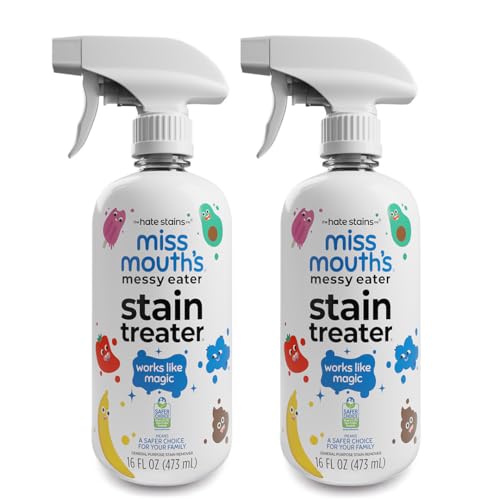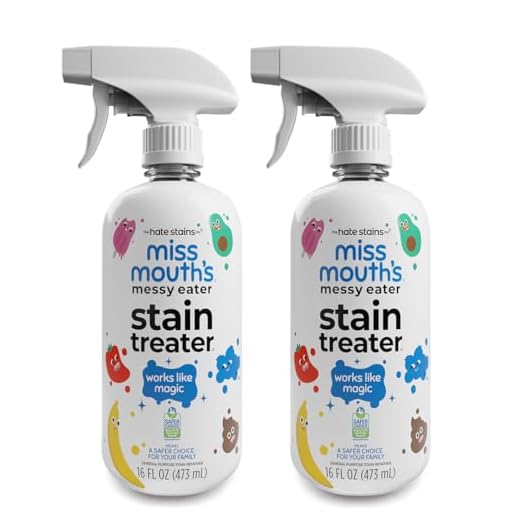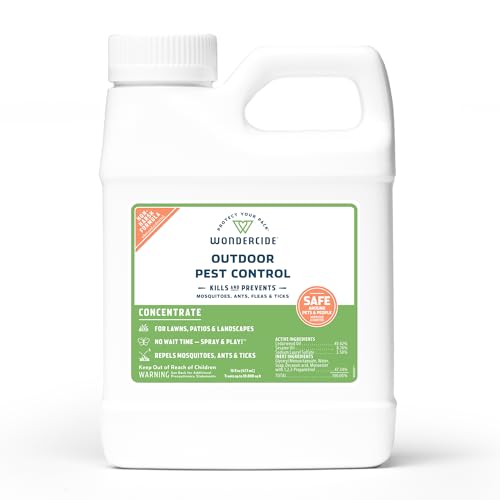



First, mix equal parts of white vinegar and water in a spray bottle. Spray the affected area generously, allowing it to soak for a few minutes.
Next, blot the spot with a clean cloth to absorb the moisture and odor. Repeat this process until the scent diminishes.
For stubborn remnants, sprinkle baking soda over the damp area. Let it sit for several hours, then vacuum it up. This natural deodorizer will help eliminate lingering odors effectively.
After treating the spot, wash the item according to its care instructions. Using a laundry detergent with enzymes can enhance the cleaning process.
Regular maintenance and immediate action can prevent long-term issues, ensuring your beloved textiles stay fresh and clean.
Identify the Type of Fabric Before Cleaning
Understanding the material is key to effective treatment. Different textiles react uniquely to various cleaning methods. Here’s what to consider:
- Cotton: Generally durable and machine washable. Use warm water and a gentle detergent.
- Wool: Requires special care; avoid hot water. Use a wool-safe cleaner and dab gently.
- Synthetic Fabrics: Usually resistant to stains. Test cleaners on a hidden area first.
- Silk: Very delicate; use cold water and a specialized silk cleaner. Blot, don’t rub.
- Denim: Sturdy and can handle harsher treatments. Wash with a mix of vinegar and water.
Always check care labels for specific instructions. Testing any cleaning solution on a small, inconspicuous area prevents damage. Being cautious saves your favorite items from unnecessary wear.
Gather necessary materials for stain removal
For tackling stubborn marks on textiles, having the right supplies is key. Start with white vinegar, which neutralizes odors and helps lift stains. Pair it with baking soda for an extra cleaning boost. A clean cloth or paper towels will be essential for blotting the area; avoid rubbing to prevent spreading the issue.
Consider a gentle detergent that’s safe for your specific material. An enzymatic cleaner can be useful as it breaks down organic matter effectively. You might also want a spray bottle for easy application of your cleaning solution. If the item is machine-washable, prepare a laundry basket for quick disposal.
Optional tools
A soft-bristled brush can assist with deeper cleaning, especially on textured surfaces. Gloves may protect your hands from strong cleaning agents. Don’t forget to have a vacuum cleaner on hand for final touch-ups. For further guidance on maintaining freshness in pets, check out how to get rid of skunk smell on a cat.
Apply cleaning solutions safely and thoroughly
Always test any cleaning solution on an inconspicuous area of the material first. This precaution helps ensure that the solution won’t damage or discolor the surface. Use a cotton swab or a small cloth to apply the cleaner, watching for any adverse reactions.
Proper dilution and application
Mix the cleaner according to the manufacturer’s instructions. Too concentrated a solution may harm delicate fibers, while a diluted mix might not be strong enough to remove the stain effectively. Apply the cleaner gently, using a blotting motion rather than rubbing, which can spread the stain or damage the texture.
Rinsing and drying
After treating the area, rinse thoroughly with clean, cool water to eliminate any residue. Blot the spot with a dry towel to absorb excess moisture. Allow the material to air dry completely, avoiding direct sunlight or heat sources, which can alter the fabric’s appearance. Check for any lingering odors before concluding the cleaning process.
Prevent future accidents with training techniques
Establish a consistent litter box routine. Ensure it’s clean and easily accessible, as this encourages proper behavior. Regularly scoop out waste and replace litter to maintain freshness.
Positive reinforcement works wonders. Reward desired actions with treats or affection, making the experience enjoyable for me. This strengthens the bond and promotes good habits.
Redirect any inappropriate behavior by gently guiding me to the litter area. Use calming tones and patience, as frustration won’t help. Consistency is key; reinforce training daily.
Consider using pheromone diffusers or sprays. They create a soothing environment, reducing anxiety and promoting a sense of security. This can minimize stress-related incidents.
Understand my body language. Watch for signs of discomfort or urgency. Early intervention can prevent mishaps. If I seem hesitant, take me to the litter box to encourage use.
For additional insights, you might find this article on why do cats like spanks helpful in understanding my behavior.
First, mix equal parts of white vinegar and water in a spray bottle. Spray the affected area generously, allowing it to soak for a few minutes.
Next, blot the spot with a clean cloth to absorb the moisture and odor. Repeat this process until the scent diminishes.
For stubborn remnants, sprinkle baking soda over the damp area. Let it sit for several hours, then vacuum it up. This natural deodorizer will help eliminate lingering odors effectively.
After treating the spot, wash the item according to its care instructions. Using a laundry detergent with enzymes can enhance the cleaning process.
Regular maintenance and immediate action can prevent long-term issues, ensuring your beloved textiles stay fresh and clean.
Identify the Type of Fabric Before Cleaning
Understanding the material is key to effective treatment. Different textiles react uniquely to various cleaning methods. Here’s what to consider:
- Cotton: Generally durable and machine washable. Use warm water and a gentle detergent.
- Wool: Requires special care; avoid hot water. Use a wool-safe cleaner and dab gently.
- Synthetic Fabrics: Usually resistant to stains. Test cleaners on a hidden area first.
- Silk: Very delicate; use cold water and a specialized silk cleaner. Blot, don’t rub.
- Denim: Sturdy and can handle harsher treatments. Wash with a mix of vinegar and water.
Always check care labels for specific instructions. Testing any cleaning solution on a small, inconspicuous area prevents damage. Being cautious saves your favorite items from unnecessary wear.
Gather necessary materials for stain removal
For tackling stubborn marks on textiles, having the right supplies is key. Start with white vinegar, which neutralizes odors and helps lift stains. Pair it with baking soda for an extra cleaning boost. A clean cloth or paper towels will be essential for blotting the area; avoid rubbing to prevent spreading the issue.
Consider a gentle detergent that’s safe for your specific material. An enzymatic cleaner can be useful as it breaks down organic matter effectively. You might also want a spray bottle for easy application of your cleaning solution. If the item is machine-washable, prepare a laundry basket for quick disposal.
Optional tools
A soft-bristled brush can assist with deeper cleaning, especially on textured surfaces. Gloves may protect your hands from strong cleaning agents. Don’t forget to have a vacuum cleaner on hand for final touch-ups. For further guidance on maintaining freshness in pets, check out how to get rid of skunk smell on a cat.
Apply cleaning solutions safely and thoroughly
Always test any cleaning solution on an inconspicuous area of the material first. This precaution helps ensure that the solution won’t damage or discolor the surface. Use a cotton swab or a small cloth to apply the cleaner, watching for any adverse reactions.
Proper dilution and application
Mix the cleaner according to the manufacturer’s instructions. Too concentrated a solution may harm delicate fibers, while a diluted mix might not be strong enough to remove the stain effectively. Apply the cleaner gently, using a blotting motion rather than rubbing, which can spread the stain or damage the texture.
Rinsing and drying
After treating the area, rinse thoroughly with clean, cool water to eliminate any residue. Blot the spot with a dry towel to absorb excess moisture. Allow the material to air dry completely, avoiding direct sunlight or heat sources, which can alter the fabric’s appearance. Check for any lingering odors before concluding the cleaning process.
Prevent future accidents with training techniques
Establish a consistent litter box routine. Ensure it’s clean and easily accessible, as this encourages proper behavior. Regularly scoop out waste and replace litter to maintain freshness.
Positive reinforcement works wonders. Reward desired actions with treats or affection, making the experience enjoyable for me. This strengthens the bond and promotes good habits.
Redirect any inappropriate behavior by gently guiding me to the litter area. Use calming tones and patience, as frustration won’t help. Consistency is key; reinforce training daily.
Consider using pheromone diffusers or sprays. They create a soothing environment, reducing anxiety and promoting a sense of security. This can minimize stress-related incidents.
Understand my body language. Watch for signs of discomfort or urgency. Early intervention can prevent mishaps. If I seem hesitant, take me to the litter box to encourage use.
For additional insights, you might find this article on why do cats like spanks helpful in understanding my behavior.
First, mix equal parts of white vinegar and water in a spray bottle. Spray the affected area generously, allowing it to soak for a few minutes.
Next, blot the spot with a clean cloth to absorb the moisture and odor. Repeat this process until the scent diminishes.
For stubborn remnants, sprinkle baking soda over the damp area. Let it sit for several hours, then vacuum it up. This natural deodorizer will help eliminate lingering odors effectively.
After treating the spot, wash the item according to its care instructions. Using a laundry detergent with enzymes can enhance the cleaning process.
Regular maintenance and immediate action can prevent long-term issues, ensuring your beloved textiles stay fresh and clean.
Identify the Type of Fabric Before Cleaning
Understanding the material is key to effective treatment. Different textiles react uniquely to various cleaning methods. Here’s what to consider:
- Cotton: Generally durable and machine washable. Use warm water and a gentle detergent.
- Wool: Requires special care; avoid hot water. Use a wool-safe cleaner and dab gently.
- Synthetic Fabrics: Usually resistant to stains. Test cleaners on a hidden area first.
- Silk: Very delicate; use cold water and a specialized silk cleaner. Blot, don’t rub.
- Denim: Sturdy and can handle harsher treatments. Wash with a mix of vinegar and water.
Always check care labels for specific instructions. Testing any cleaning solution on a small, inconspicuous area prevents damage. Being cautious saves your favorite items from unnecessary wear.
Gather necessary materials for stain removal
For tackling stubborn marks on textiles, having the right supplies is key. Start with white vinegar, which neutralizes odors and helps lift stains. Pair it with baking soda for an extra cleaning boost. A clean cloth or paper towels will be essential for blotting the area; avoid rubbing to prevent spreading the issue.
Consider a gentle detergent that’s safe for your specific material. An enzymatic cleaner can be useful as it breaks down organic matter effectively. You might also want a spray bottle for easy application of your cleaning solution. If the item is machine-washable, prepare a laundry basket for quick disposal.
Optional tools
A soft-bristled brush can assist with deeper cleaning, especially on textured surfaces. Gloves may protect your hands from strong cleaning agents. Don’t forget to have a vacuum cleaner on hand for final touch-ups. For further guidance on maintaining freshness in pets, check out how to get rid of skunk smell on a cat.
Apply cleaning solutions safely and thoroughly
Always test any cleaning solution on an inconspicuous area of the material first. This precaution helps ensure that the solution won’t damage or discolor the surface. Use a cotton swab or a small cloth to apply the cleaner, watching for any adverse reactions.
Proper dilution and application
Mix the cleaner according to the manufacturer’s instructions. Too concentrated a solution may harm delicate fibers, while a diluted mix might not be strong enough to remove the stain effectively. Apply the cleaner gently, using a blotting motion rather than rubbing, which can spread the stain or damage the texture.
Rinsing and drying
After treating the area, rinse thoroughly with clean, cool water to eliminate any residue. Blot the spot with a dry towel to absorb excess moisture. Allow the material to air dry completely, avoiding direct sunlight or heat sources, which can alter the fabric’s appearance. Check for any lingering odors before concluding the cleaning process.
Prevent future accidents with training techniques
Establish a consistent litter box routine. Ensure it’s clean and easily accessible, as this encourages proper behavior. Regularly scoop out waste and replace litter to maintain freshness.
Positive reinforcement works wonders. Reward desired actions with treats or affection, making the experience enjoyable for me. This strengthens the bond and promotes good habits.
Redirect any inappropriate behavior by gently guiding me to the litter area. Use calming tones and patience, as frustration won’t help. Consistency is key; reinforce training daily.
Consider using pheromone diffusers or sprays. They create a soothing environment, reducing anxiety and promoting a sense of security. This can minimize stress-related incidents.
Understand my body language. Watch for signs of discomfort or urgency. Early intervention can prevent mishaps. If I seem hesitant, take me to the litter box to encourage use.
For additional insights, you might find this article on why do cats like spanks helpful in understanding my behavior.










